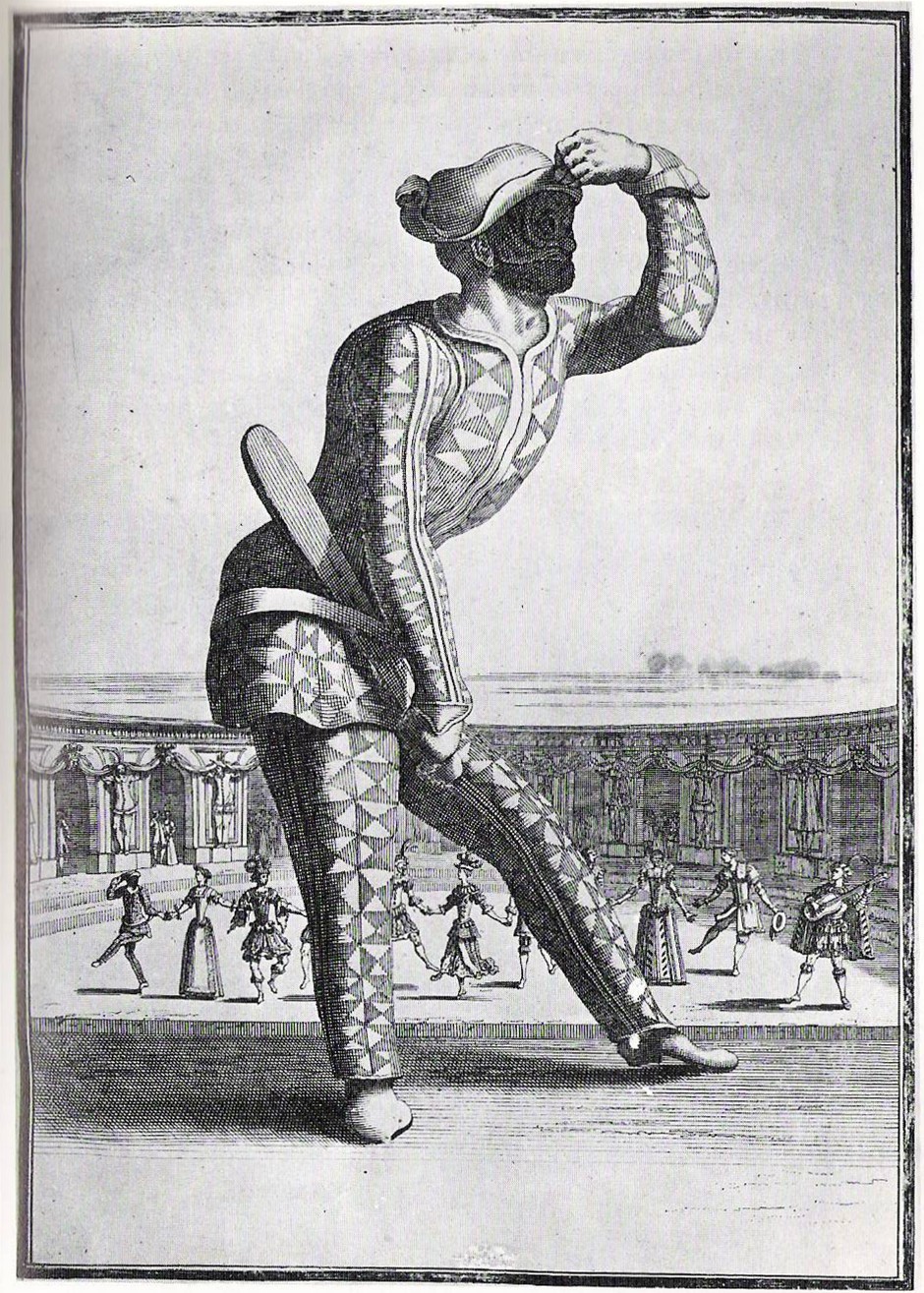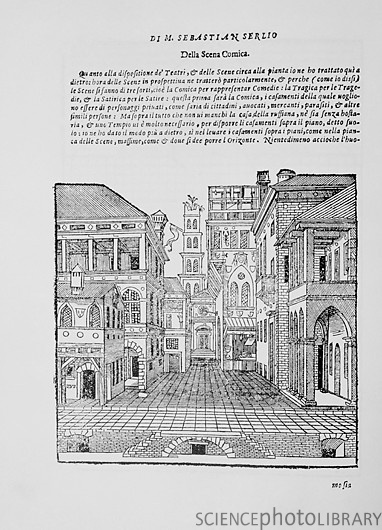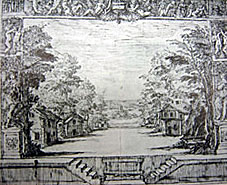Commedia dell'arte

When non-religious performances were outlawed by the Roman Catholic Church (after the fall of the Roman Empire) the banished actors traveled across Europe for almost a thousand years before settling in Florence around the 15th century (after the Church lost Constantinople to the Ottoman Turks).
To overcome the language barrier the actors mingled mime, an art borrowed from the Etruscans, with improvisations on simple plots. The characters they used are the universal archetypes that Jung speaks of (the jealous husband, the miserly merchant, the pompous doctor, the young man in love, the underpaid servant.) The actors invented a nonsensical language, gibberish, from conversations they’d glean around town and in the marketplaces.
Wherever the troupes traveled their style left an imprint and, from one generation to the next, the actors had plenty of time to perfect their technique.
The commedia dell’arte style entertains by revealing human failings with humor. The plots evolve around misunderstandings and missed opportunities, with twin brothers, suspicious spouses and disguised servants. The tempo is fast-paced, so as not to give the public time to think, with pregnant pauses to give the public time to catch up.
Most all the actors wore masks, so spectators could immediately identify the character even without speaking. Only the young people in love, the father/tutor, and the heroine’s maidservant never wore masks. The traveling troupes were a family affair, with pedigrees that went back hundreds of years. The actors kept their roles, which were adapted as they aged, for life. In some cases they added the name of their character onto their own name.
Commedia dell'arte underwent several transformations from its distant, rustic, Atellana past to official recognition during the Renaissance as an actors guild. The plays were performed in a closed theatre. Elaborate costumes and elegant dialogues replaced slap-stick improvisation and acrobatics.
The style was adopted by Machiavelli in the 16th century for his (one and only) comedy/satire The Mandragore. In the 17th century the French playwright Moliere used the style to poke fun of the upper classes, and by writers of Comic Opera, which was half spoken and half sung. Pierre Augustin Caron de Beaumarchias (born 1732) wrote satires and comic operas on the French nobility and bourgeoisie the years preceding the French Revolution. He also helped arm the American colonists.
Commedia dell’arte was the foundation for playwright Carlo Goldoni (born 1707) who wrote his plays in the Venetian dialect. As a youth he joined a traveling theater troupe and at twenty-four received a diploma in law. He first wrote tragedies but, dissatisfied, borrowed Moliere’s stories and placed the characters in a Venitian environment.
Commedia troupes included women actors. The Greeks only allowed men actors even for women's roles. The Catholic Church did not allow women to perform in the liturgical plays and, as hard as it is to imagine, men acted the female roles in Shakespeare’s plays. You will never think of Juliette in the same way.
Molière, who shared a theatre in Paris with The Italians, used women actors in his comedies. After that people got wise and there was no more question of men taking on women’s roles.
Commedia dell’arte is arguably the single, most important technique in theatre history, one that all actors should know.
With the Renaissance came a greater tolerance to non-religious plays, particularly in Florence, where the comedians settled and formed a guild called the Art of Comedy. The commedia troupes did not have written dialogues for their stories, only later were they scripted by writers and composers such as Beaumarchais, Molière, Goldoni, Rossini and Shakespeare.
Sganarello
Perspective and the Italian Stage
Painted screens and wheeled platforms were commonly used in Ancient Greece, but most innovations in stage design were developed during the Italian Renaissance. Perspective was the latest discovery in art and played a dominent role in the backdrops - which could be changed with each scene.


